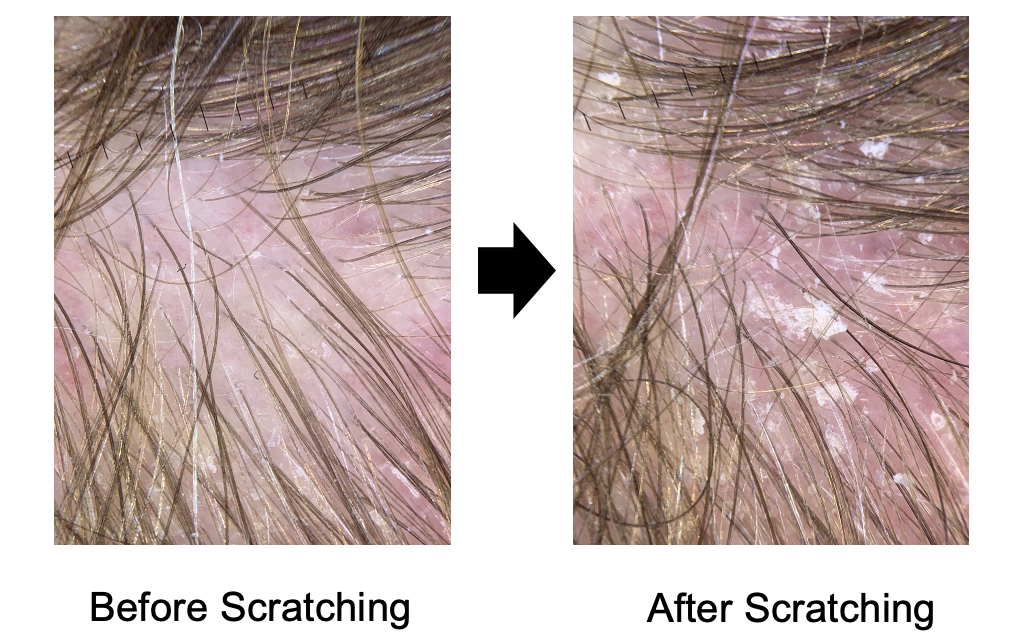Scratching the Surface of Seborrheic Dermatitis: The Bhoyrul Technique
Scratching the Skin Surface Promotes Interfollicular Scales and Clusters of Scales in Seborrheic Dermatitis.
The proper examination of the scalp employs a mix of looking with the eyes (ie clinical examination and trichoscopy), gentle pulling of hair (in the case of the pull test), sometimes plucking (in the case of the pluck test). A new study reminds us that we should probably add scratching of the scalp as well.
In other words, when in doubt - scratch your head. Not your own head - but the head of your patient.
The Bhoyrul Paper of 2022
Dr Bhoyrul set out to examine how trichoscopy features change with gentle scratching of the scalp. 10 patients with fibrosing alopecia in a pattern distribution, 10 had AGA associated SD, 4 patients with lichen planopilaris, 10 patients with frontal fibrosing alopecia, 1 patient with discoid lupus erythematosus, and 10 patients with SD in the absence of hair loss were examined.
20 % of FFA, 25 % of LPP, 20 % of FAPD and 0 % of discoid lupus showed accumulation of interfollicular scaling after scratching. None of these cases had “clusters of scales” after scratching. In contrast, 100 % of cases of seborrheic dermatitis demonstrated development of interfollicular scaling and 100 % showed clusters of scales after scratching.
The Bhoyrul Scratching Technique in Action
Below is a before and after panel of one of my own patients with androgenetic alopecia and seborrheic dermatitis. Gentle scratching of the scalp surface (the "Bhoyrul Technique) shows the accumulation of yellow clusters of scales.
Final Comment
I like this report …. a lot!
In difficult diagnostic cases of hair loss, it’s of little use for the clinician to stand by and scratch his or her own head in search of inspiration. But it sure seems valuable to scratch the head of the patient and see what happens to scaling patterns by trichoscopy.
We need to add scratching to our examination skills!
It appears in this small study that accumulation of interfollicular scaling and especially “clusters” of scaling are common in seborrheic dermatitis. The author points out that this technique may be useful in distinguishing tough cases of FAPD from cases of androgenetic alopecia that have associated seborrheic dermatitis.
More studies are needed with the technique, but I haven’t stopped scratching (my patient’s scalps) since the day I first read this.
Key examination skills involve looking, pulling, plucking… and scratching!
REFERENCE
Bhoyrul B. A simple technique to distinguish fibrosing alopecia in a pattern distribution from androgenetic alopecia and concomitant seborrheic dermatitis. J Am Acad Dermatol. 2022 Jan;86(1):163-165.
This article was written by Dr. Jeff Donovan, a Canadian and US board certified dermatologist specializing exclusively in hair loss.


